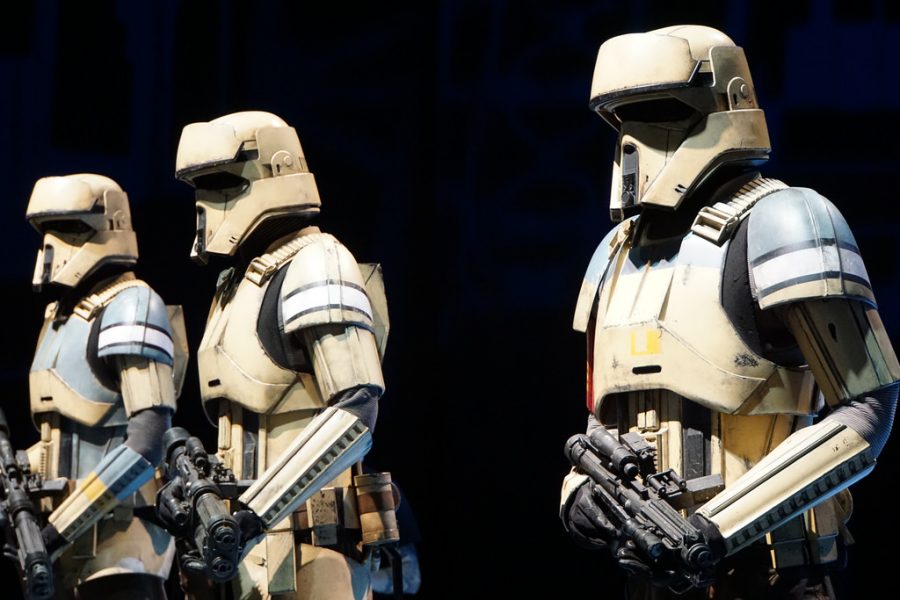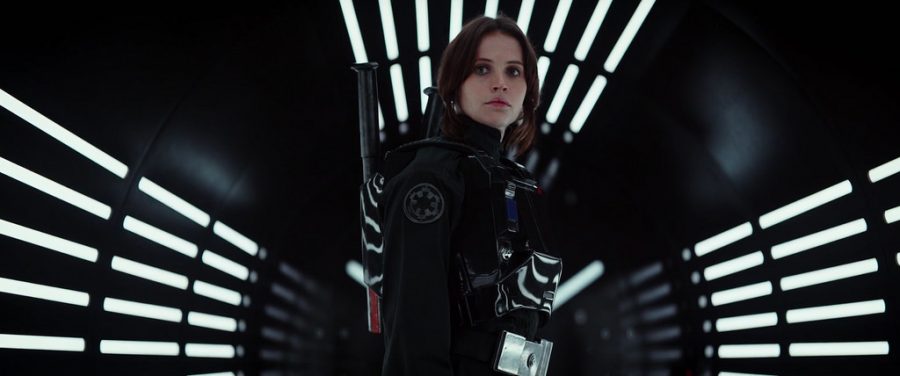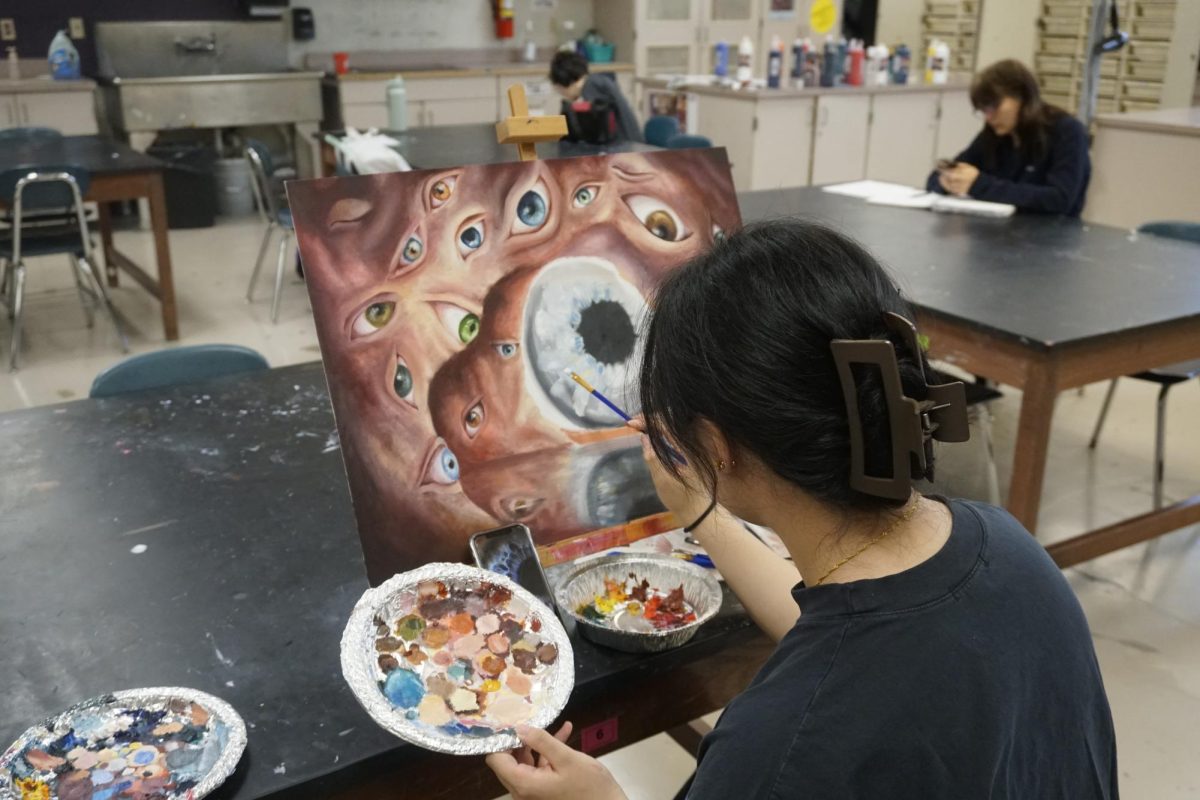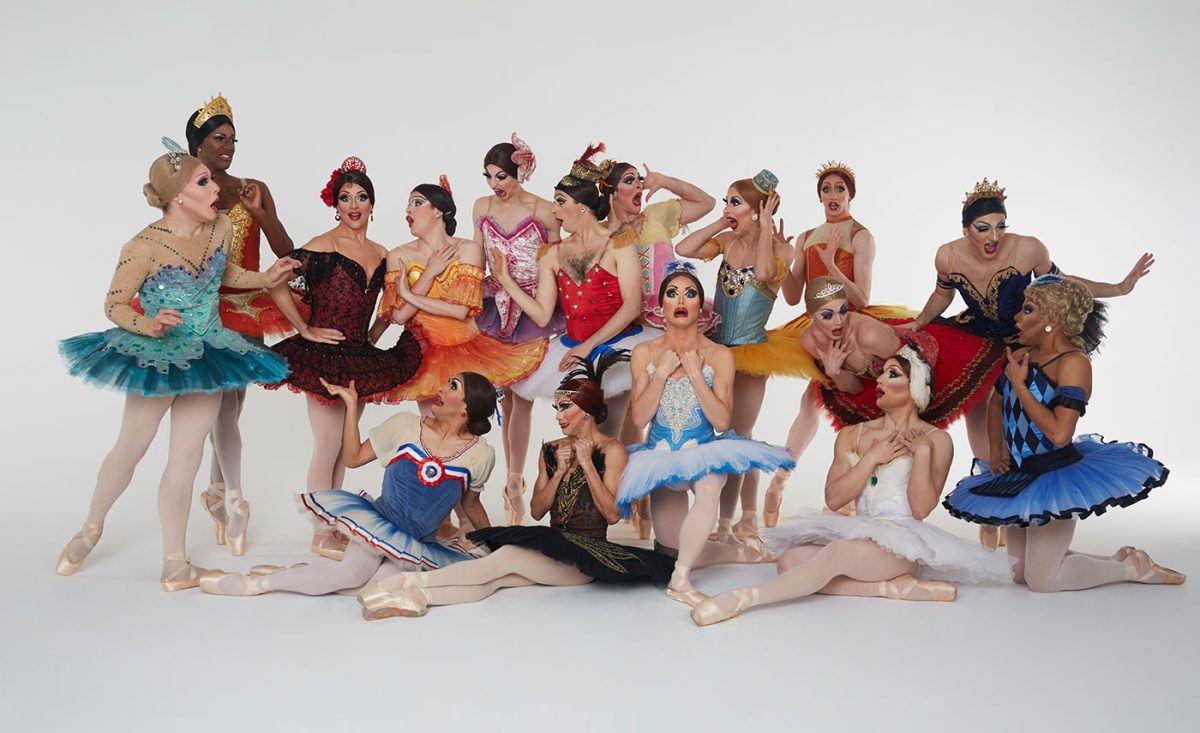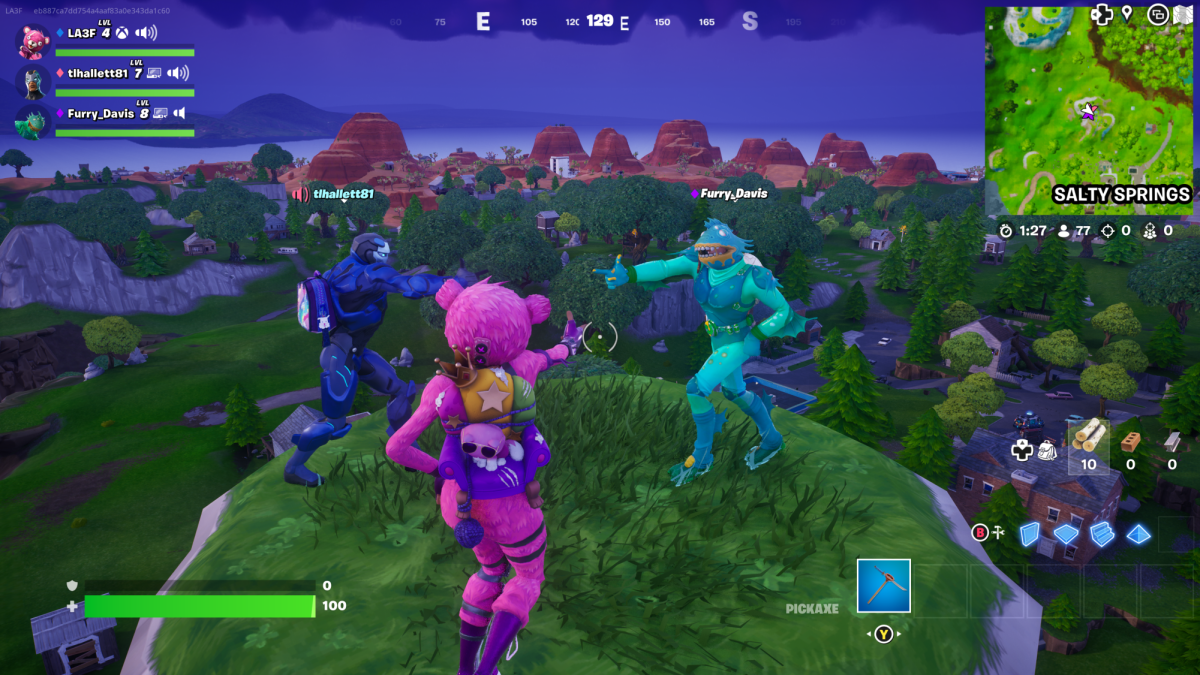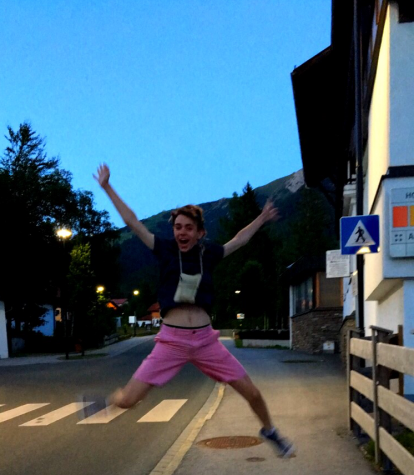Right away, fans will notice a difference between “Rogue One” and the “Star Wars” films we’ve grown up with, as (rather controversially) director Gareth Edwards and Lucasfilm president Kathleen Kennedy opted not to open the film with the traditional text crawl. Instead, “Rogue One” opens with an emotionally stirring prologue (set fifteen years prior to the main events of the film) in which we first meet a young Jyn Erso, living with her father and mother on a remote planet far from the grasp of the Empire. We learn that Jyn’s father, Galen (Mads Mikkelsen), fled the Empire after learning that his scientific work was to be used to power a planet-destroying superweapon known as the Death Star, but the Empire does not tolerate defectors and Imperial Director Orson Krennic comes to (forcefully) bring Galen back onto the operation so that construction of the superweapon can resume. Fast-forward fifteen years and we’re reacquainted with Jyn (Felicity Jones) as she is busted out of an Imperial prison camp by Rebel Captain Cassian Andor (Diego Luna) and brought to a secret rebel base to join a team of rebels as they embark on a treacherous interplanetary mission to obtain the plans to the dreaded Death Star in hopes that the Rebellion may use them to find and exploit a weakness.
The entire appeal behind the concept of these “Star Wars” spinoffs, both “Rogue One” and the forthcoming “Han Solo” film, is that they present the unique creative opportunity for a departure from the traditional space-opera tone and style of the main saga films. As such, “Rogue One” is a bit of an experiment for Disney, as it blends familiar lore, characters, visual styles, and locales with a substantially grittier tone. “Rogue One” puts the ‘War” in “Star Wars.”
Gareth Edwards, director of the criminally underrated recent “Godzilla” film, once again showcases his unique visual style and general aptitude as a filmmaker with “Rogue One,” creating a tremendously satisfying action thriller that brilliantly balances the classic look and feel of “Star Wars” with a grittier, action-heavy war-film milieu. It has glaring faults, particularly in terms of pacing and an abhorrently idiotic creative choice that leaves a lingering bad taste, but with a tremendously compelling cast of characters, an absolute thrill-ride of a narrative, and some of the best “Star Wars” action scenes and moments to boot, “Rogue One” is a phenomenal cinematic experience. Furthermore, by exploring “Star Wars” lore set directly prior to the events of the original trilogy, “Rogue One” offers an exciting and emotionally poignant recontextualization of the events of the Galactic Civil War (depicted in the original “Star Wars” trilogy), patching up one of cinema’s most iconic — and egregious — plot holes and providing a deeper and more thoughtful exploration of the series’ classic mythos. Not only is “Rogue One” an outstanding film on its own, but it retroactively improves “A New Hope” and to a lesser degree its two sequels, as well.
“Rogue One” is at its best when it’s at war; and thankfully, it’s at war for the majority of its two hour runtime. It boasts the most action of any “Star Wars” film to date, and while that meant little for the lifeless and dull set pieces of the prequels, the action on display in “Rogue One” is tense, gritty, and enthralling. Through it, Gareth Edwards maintains a heightened level of excitement and tension which carries the film at a breakneck pace for the majority of its duration. This doesn’t necessarily mean that “Rogue One” is only successful when it’s carried by the weight and excitement of its action sequences; in fact, after the first twenty minutes — which fall victim to jumbled storytelling as Edwards attempts to introduce too many plot threads at once — the film basically flies by, carried through both action set-pieces and character-building scenes alike by a constant sense of tension and dramatic weight.
After the film’s brief prologue — which establishes its personal stakes nicely, as well as formulates an intriguing and textured character dynamic between Jyn, her father, and Director Krennic — we’re introduced to Diego Luna’s character Cassian Andor, a rebel spy on a secret mission. He’s up to his own business, and as he travels from planet to planet, the film’s narrative also follows Jyn, who is being detained in an Imperial prisoner of war camp, depicting the mundanity of her day-to-day life. Unfortunately, one of the two narrative threads at play here is far more interesting than the other (Cassian’s mission is exciting and subtly introduces some darker hues to the Rebellion’s collective moral compass, while Jyn’s story is largely static here), which makes the frequent cuts to Jyn’s confinement distracting, as they impede the momentum of the more interesting plot thread here.
Fortunately, Cassian — accompanied by some other rebel soldiers and the film’s new droid K2SO (Alan Tudyk, giving perhaps the best performance of his entire career) — busts Jyn out of prison in no time (there’s a fun easter egg here that ties the originals to the prequels quite nicely; fans will love it), and from this point onwards, “Rogue One” builds an indomitable, unfaltering momentum and a growing sense of intensity that doesn’t let up until the final shot; it’s absolutely enthralling. After breaking Jyn out of Imperial custody, the rebels bring her to their base on Yavin IV (which looks and feels exactly as it does in “A New Hope”), where they present her with a secret mission. It’s here that we’re more formally introduced to K2SO, who, were it not for Felicity Jones’ absolutely magnetic, emotionally complex performance as Jyn, would be the film’s best character. He steals every single scene he’s in, and while he provides ample comic relief, the dark and nihilistic nature of his humor never clashes with the film’s darker tone.
Also accompanying Jyn, Cassian, and K2SO on their interplanetary voyages are Imperial defector Bodhi Rook (Riz Ahmed); Chirrut Imwe (Donnie Yen), a blind priest from the holy planet Jedha and devout believer in the power of the Force; and his jaded protector Baze Malbus (Jiang Wen), a former Force-believer like Chirrut who lost faith after the Empire’s rise. Felicity Jones’ performance as Jyn makes her easily the most likeable and complex of the film’s cast of characters, but she won’t necessarily emerge as the fan-favorite. The dour seriousness with which Jones’ imbues the role differs her from other “Star Wars” protagonists in that she’s not immediately likeable like Luke or charming like Rey (let’s not lie to ourselves and pretend that Anakin was ever a likeable character), yet despite not being as accessible a character as classic “Star Wars” heroes, she’s arguably better. Jyn is an admirably complex character, and there’s a great deal of subdued sensitivity in Jones’ performance, that provides ample emotional depth to counterbalance her grave intensity.
Fans will more likely gravitate towards Alan Tudyk’s K2SO, who serves as the film’s comic relief. He’s as loveable as “The Force Awakens’” BB-8, but his darker sense of humor (as opposed to BB-8’s appeal by sheer cuteness factor) meshes better with the film he’s in. Diego Luna’s Cassian Andor is an excellent foil to Felicity Jones’ Jyn Erso; he’s “Rogue One’s” Han Solo in terms of charm and heroics, but he’s also a fittingly darker and more complex character. Donnie Yen and Jiang Wen are also equally likeable as Chirrut and Baze, respectively, and despite the limited backstory and development each is given, the pair manage to create likeable and interesting characters nonetheless. Riz Ahmed’s Bodhi Rook is likely the film’s most underused character; he’s more a vehicle for the plot at some points than much else, and despite Ahmed’s best efforts he just can’t compare to his costars.
“Rogue One” is certainly less of a character-centric film than a number of its fellow “Star Wars” films; where “The Force Awakens” relied on a semi-familiar story formula to ensure sufficient development for each of its characters (we are going to be spending at least three films with them, after all), “Rogue One” prioritizes narrative and thematic heft over substantive character development. We’re given sufficient information to understand each of the film’s supporting characters — each of whom has, rather notably, been affected and/or otherwise harmed by the Empire — and they’re each imbued with enough personality to make them all immediately loveable. “Rogue One’s” cast of characters is very atypical for a “Star Wars” movie, and that makes the bunch all the more interesting; they’re a ragtag team of diverse individuals (both in terms of ethnicity and personality), rather than a band of outright heroes, which makes for an oddly endearing team dynamic. But what matters most is that we’re rooting for them.
Anyone who has seen “A New Hope” or knows anything about “Star Wars” knows that the Death Star plans are stolen prior to the events of the film, which means that “Rogue One” has an uphill battle to fight in terms of tension and stakes, as general audiences already know that the characters’ secret mission is a success. Director Gareth Edwards rather brilliantly accounts for this by presenting us with an instantly loveable cast of characters, then proceeding to plunge them into a hellish and brutal battle with very tangible stakes and incredibly real danger. “Rogue One” is every bit the “Star Wars” war film it sets out to be, complete with some of the most excruciatingly tense action sequences any blockbuster of these proportions has seen in years, and some of the most exhilarating as well.
Despite its slightly rocky start and a very, very ill conceived creative choice (which I won’t discuss further because it delves too far into potential spoiler territory) “Rogue One” is an absolute triumph, and its third act is a masterwork both of conceptualization and of execution. The last portion of the film, which is comprised predominantly of a tense ground assault on an Imperial compound and an exhilarating high-stakes space battle — without a doubt the best of the entire franchise — thrives despite the knowledge that the characters are successful in their endeavors. Edwards stages his action sequences with expertise; he’s a master when it comes to highlighting scale and perspective in general, particularly when it comes to action sequences, and the battles in “Rogue One” feel genuinely epic. The Star Destroyers feel suitably enormous and the X-Wings appropriately tiny by comparison, and in the ground battle he revels in the sheer intensity of the action. I’ve seen few films whose action sequences are as enthralling and adrenaline-pumping as those in “Rogue One.” It calls to mind the latest “Mad Max” in terms of intensity, and “Apocalypse Now” in brutality and mood.
The unique thing about “Rogue One” as a whole, though it’s especially prevalent in the exhilarating third act, is that the filmmakers are unafraid to allow harm to come to their characters. Unlike the majority of studio blockbusters, and even the majority of the other “Star Wars” films, whose heroes emerge from every lightsaber duel, shootout, and space battle more or less unscathed, “Rogue One” is not afraid to allow countless Rebel soldiers, pilots, and even its own protagonists, to be severely injured. There are some genuinely ballsy twists throughout the film, especially in its third act, and what ultimately makes “Rogue One” such an exhilarating and unique film is the way its finale reconciles epic, exciting action sequences with emotionally ripe revelations and twists.
What’s also genuinely special about “Rogue One’s” finale — and to some extent the entire film — is the way its events recontextualize the proceedings of “A New Hope.” After the pulse-pounding, heart-stopping intensity of “Rogue One’s” finale, the iconic opening scenes of the original “Star Wars” hold so, so much more weight. “Rogue One” feels like a very logical and fitting prequel chapter to “A New Hope,” and while watching it it’s quite easy to imagine the smooth flow from the its final scene into the opening chase of “Episode IV.” A few fan favorite characters from the original trilogy have brief appearances here, mostly for the purpose of establishing their place within the context of the series’ universe prior to the events of the original. Most notable of these is Darth Vader, who despite having a very limited role in the film, is given one sequence of pure, horrifying, unhinged brutality that’s surely amongst the best “Star Wars” moments of all time.
“Rogue One” lives up to its full potential both as a “Star Wars” film and as (without a doubt the best) a “Star Wars” prequel. It recontextualizes the events of “A New Hope” in an exciting way, lending the Rebellion’s fight a surprisingly powerful emotional undercurrent, and it also boasts some surprisingly mature themes. This is a film about devoting oneself to a cause, about realizing the importance of something bigger than oneself and fighting for what’s right. Though the film’s production crew have adamantly stated that it is not a political film, a “Star Wars” film could hardly feel more timely. It uses its stature as a predecessor to “A New Hope” to offer a more sophisticated and thoughtful meditation on themes that were present but not always fully elaborated upon in the original trilogy, and arguably more impressively, it explores the series’ classic ‘good vs. evil’ duality in a manner equally as thoughtful. No longer is the Rebellion pure good and the Empire pure evil; there are shades of grey — prior to obtaining the Death Star plans (which legitimately feel like a first sign of hope here) it’s an organization pushed by despair and hopelessness to do atrocious things for the greater good — and if the Empire is pure black then the Rebellion is only a moderately light shade of grey.
“Rogue One” may have its downfalls, particularly in that it stumbles through its opening few scenes, but when it’s good it’s not just great, but phenomenal, and when it’s less good it’s still pretty great. It might not be as accessible or as enjoyable a film as “The Force Awakens,” but if “The Force Awakens” is “A New Hope” then this is “The Empire Strikes Back,” and to those willing to invest themselves in a unique new cast of characters and a story that’s considerably darker than that of previous “Star Wars” films, there’s tons to love about “Rogue One.”
